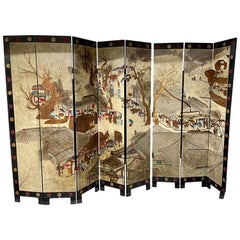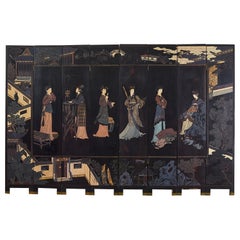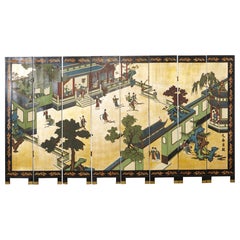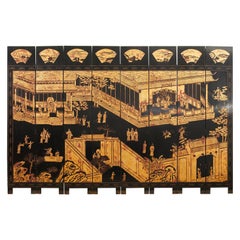Signed Asian Coromandel Eight Panel Screen
Mid-20th Century Asian Chinoiserie Paintings and Screens
Wood
20th Century Chinese Chinese Export Paintings and Screens
Brass
Recent Sales
20th Century Chinese Chinese Export Paintings and Screens
Brass
20th Century Chinese Chinese Export Paintings and Screens
Brass
20th Century Chinese Chinese Export Paintings and Screens
Brass
20th Century Chinese Chinese Export Paintings and Screens
Brass
Antique 18th Century and Earlier Chinese Paintings and Screens
Wood, Lacquer
People Also Browsed
Early 20th Century French Chinoiserie Screens and Room Dividers
Wood, Mother-of-Pearl
20th Century Chinese Chinese Export Paintings and Screens
Brass
Early 20th Century French Empire Benches
Mahogany
Vintage 1960s Italian Post-Modern Vanities
Metal, Brass
Early 20th Century Planters, Cachepots and Jardinières
Metal
20th Century Chinese Chinoiserie Paintings and Screens
Canvas
20th Century Chinese Chinoiserie Paintings and Screens
Wood, Lacquer
Antique 17th Century French Aubusson Tapestries
Wool
21st Century and Contemporary Italian Modern Side Tables
Ceramic
Vintage 1980s Chinese Screens and Room Dividers
Wood
Late 20th Century Chinese Screens and Room Dividers
Brass
Antique Early 1900s French Art Nouveau Bird Cages
Iron
Vintage 1950s Japanese Mid-Century Modern Paintings and Screens
Fabric, Wood, Paper
Antique 19th Century English Chinoiserie Cabinets
Hardwood
2010s British Jewelry Boxes
Maple
Mid-20th Century Other Screens and Room Dividers
Jade
Finding the Right Paintings-screens for You
Traditional Asian paintings were often created on scrolls and folding screens. Artisans made screens that could be folded up or spread out by connecting several panels using hinges. Today, antique Asian folding screens and paintings are sophisticated decorative accents that can serve as makeshift partitions to ensure privacy.
The original folding screens were created by Chinese artists. The earliest record of screens comes from the 2nd century B.C., and surviving examples date back to the Ming dynasty. Chinese painting utilizes many of the same tools as calligraphy — these screens were crafted from wood with painted panels featuring striking art or calligraphy that told cultural stories or represented nature and life in the area.
The practice was introduced to Japan, where paintings for screens were made on paper and silk, in the 8th century. These paintings frequently feature subjects such as landscapes, animals, flowers and Buddhist religious themes. Along with screens for tea ceremonies and dance backgrounds, there were screens for use in Shinto and Buddhist temples.
In the 17th century, screens began to be imported to Europe where their popularity grew. Coco Chanel famously collected Coromandel folding screens.
Traditional Asian paintings can make a tasteful addition to any wall, and screens can be used as decoration or, in the case of larger iterations, as an aesthetic way to divide a large room. Browse the selection of antique Asian paintings and screens from a variety of styles and eras on 1stDibs.



